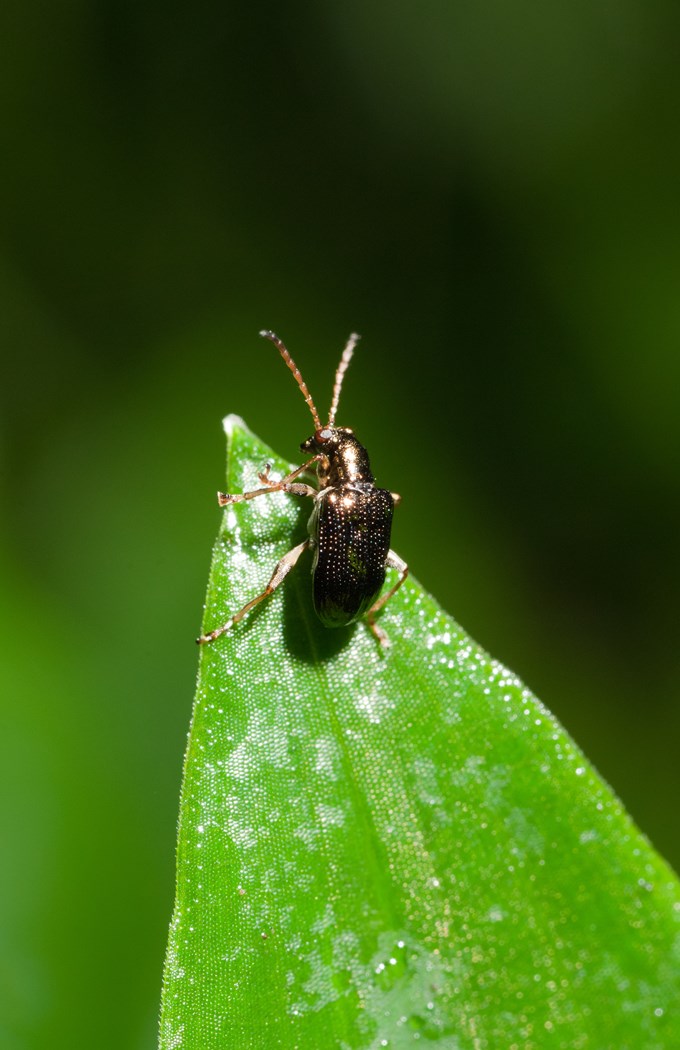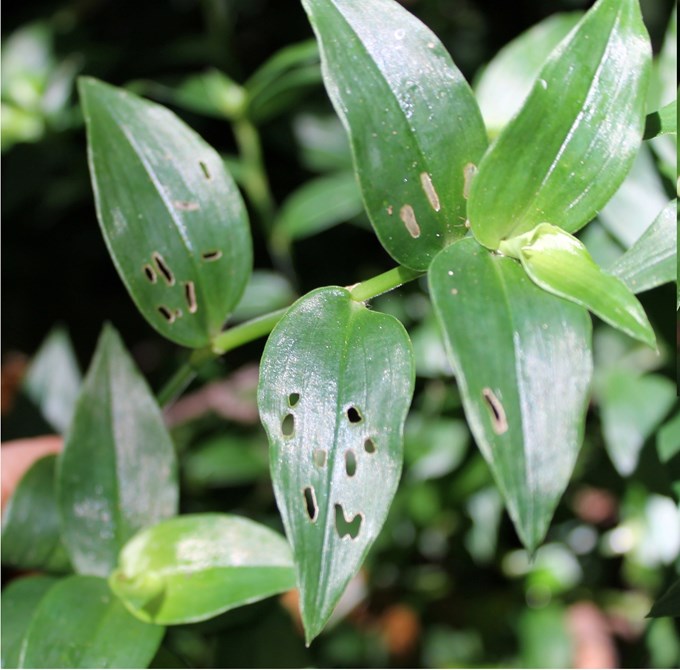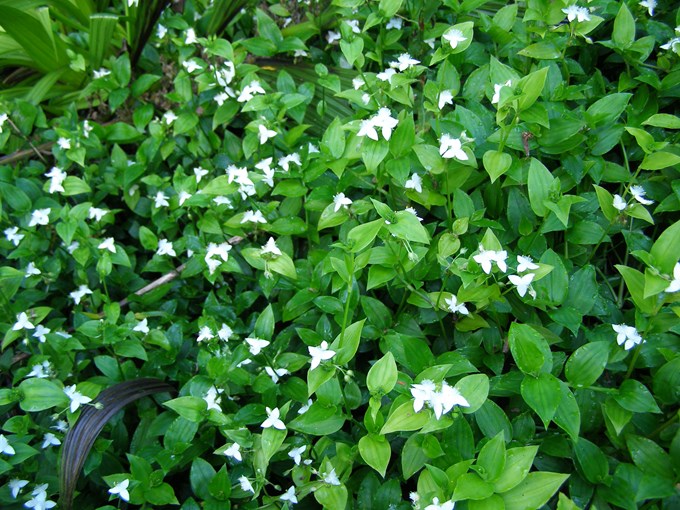Nearly 400 beetles were released into a Birkenhead reserve earlier in December with one mission: take down the aggressive tradescantia weed (commonly known as ‘wandering willie’).
Nicknamed Knobbly, Shiny and Stripy, the three species of beetle each attack a different part of the weed – the stem, the leaf and the tip. They are host-specific, meaning they only attack tradescantia and will starve without it.
This is the first time all three species have been released at a single site in Auckland.
“Tradescantia is a nasty invasive weed that smothers native seedlings and prevents regeneration. It also causes dermatitis in dogs and other animals, so it’s great to have another tool to control it,” says Holly Cox, Auckland Council's Senior Biosecurity Advisor.
Biological control
“The beetles are an example of biological control, which is control using a weed’s natural enemy. It doesn’t eradicate it, but successful biocontrol will weaken a weed and reduce its abundance – making it easier to control with other methods and allowing native species to compete.”
Before being released in New Zealand, a biocontrol agent undergoes extensive research and testing. These beetles were approved for release in 2008 (leaf) and 2011 (tip and stem) and are each present at other Auckland sites.
Kaipātiki Local Board member Danielle Grant is very happy to host the new residents.
“Many local groups and individuals help to control weeds in our parks and on their own land, so it’s great to have nature on our side."
Tiny agents
"Success relies on the beetles becoming well established, so we are keeping the exact location under wraps for our little agents to be left alone to do their work."
Ongoing monitoring of the Birkenhead site will reveal how well Shiny, Stripy and Knobbly work together to help keep tradescantia under control.
If the trial release proves successful, other affected sites may also become home to the weed-killing beetles.




